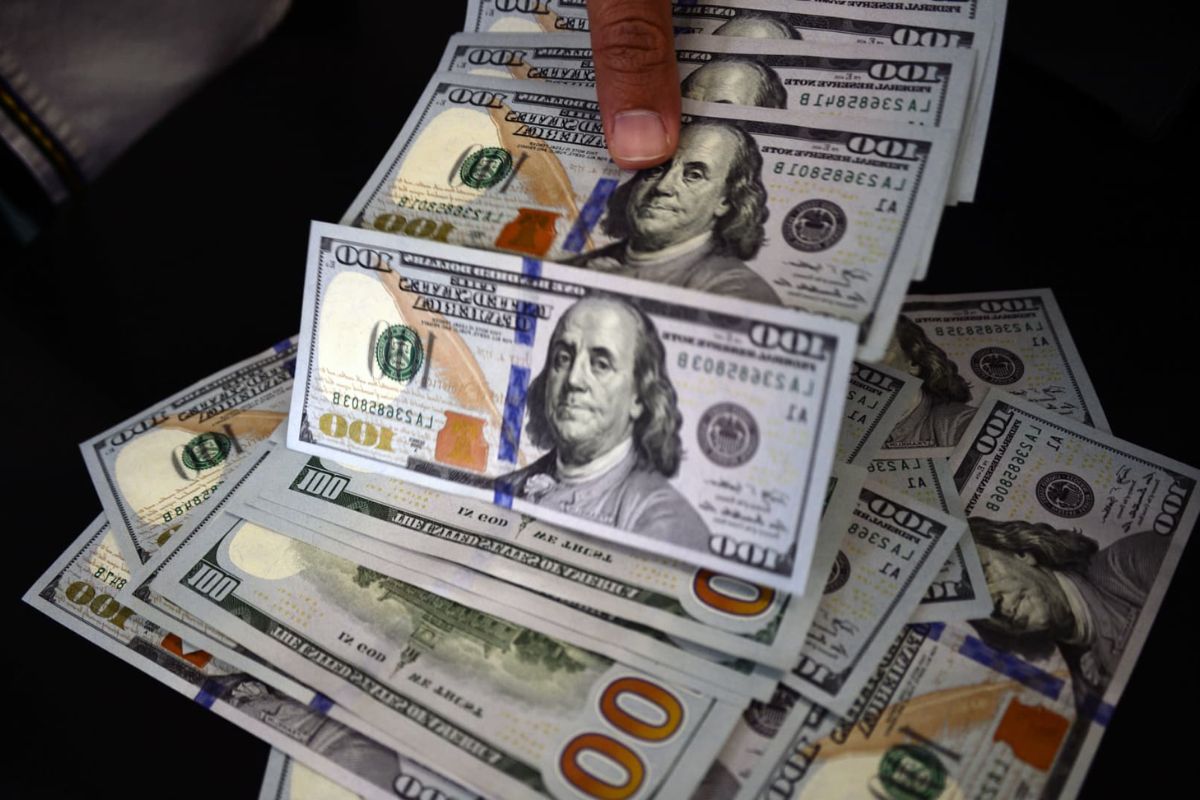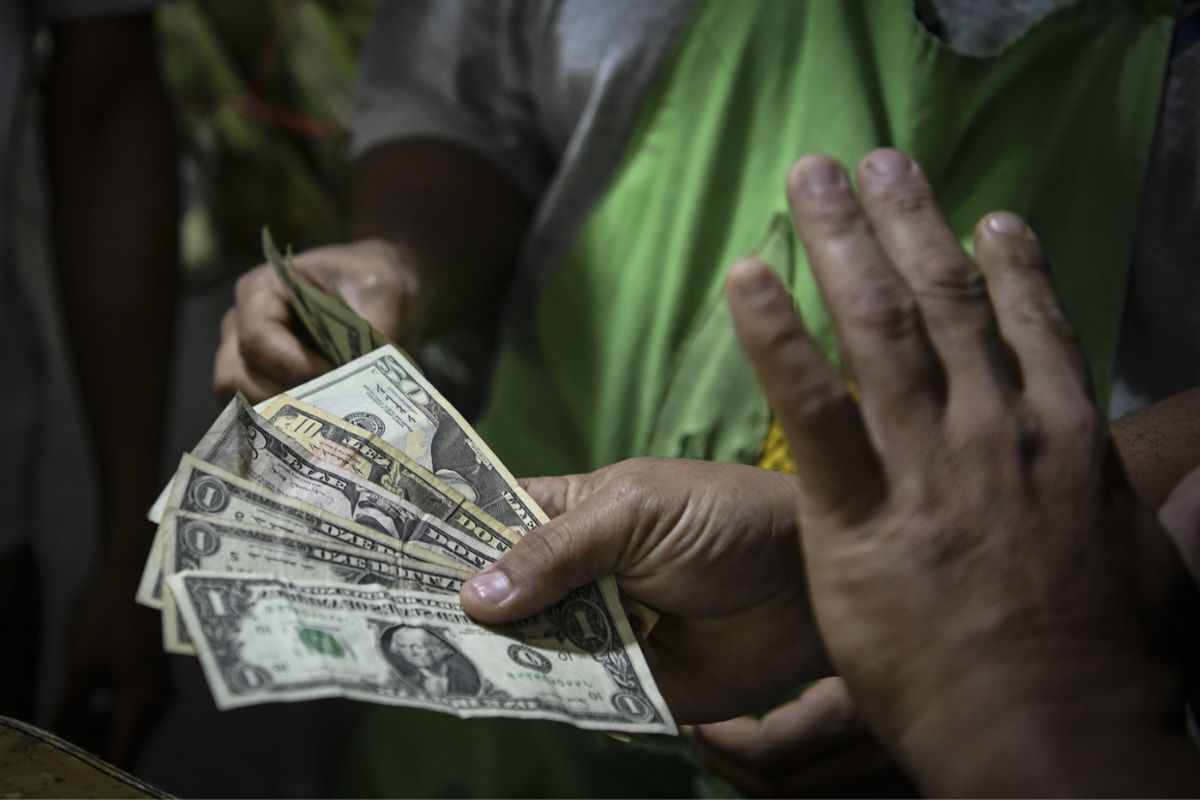Dollar Holds Strong: The U.S. dollar has been on a steady rise, reaching an impressive 11-week high recently. This surge in strength comes as no surprise, given the positive economic indicators that have been driving investor confidence in the greenback.
However, amidst geopolitical uncertainties, it is worth exploring the factors that have contributed to the dollar’s resilience and analyzing the potential implications for global markets.
From the modest decline of the euro despite positive German data to the reactions of the Australian and New Zealand dollars to actions by their respective reserve banks, and even the surprising strength of the Japanese yen in the face of economic challenges, there is much to unpack in understanding the dynamics behind the dollar’s current hold.
Key Takeaways
- The dollar’s strength is attributed to positive economic indicators, robust data, and statements from the Federal Reserve Chair.
- Investors are holding onto their dollar holdings as the currency is seen as a safe-haven during times of uncertainty.
- The euro has experienced a modest decline despite positive German data, influenced by ongoing geopolitical uncertainties and concerns about the economic impact of the COVID-19 pandemic.
- The Australian and New Zealand dollars have shown slight increases and gains respectively, influenced by Reserve Bank actions and positive sentiment in the Chinese equity market.
- The Japanese yen continues to strengthen despite economic challenges, potentially due to safe-haven demand and the cautious approach of the Bank of Japan.
U.S. Dollar Maintains Strength Amidst Positive Economic Indicators
The U.S. dollar’s resilience persists as it maintains its strength amidst a backdrop of positive economic indicators.
Also Read: Dollar’s Struggles and Yen’s Rise in Light of Option Expiries
The recent surge in the dollar’s value can be attributed to a combination of factors, including robust economic data and statements from Federal Reserve Chair Jerome Powell.
The strong economic indicators, such as low unemployment rates and solid GDP growth, have instilled confidence in investors, leading them to view the dollar as a safe-haven currency.
Additionally, Powell’s comments suggesting a more cautious approach to interest rate cuts have diminished expectations of early and steep cuts. This has further bolstered the dollar’s appeal, as traders now price in only a 16% chance of a rate cut in March.
Investors Hold Firm to Dollar Holdings Amidst Geopolitical Uncertainties
Amidst the ongoing geopolitical uncertainties, investors and corporations are steadfastly holding onto their dollar holdings, unwilling to divest as they navigate the approaching China Lunar New Year holiday and evaluate the potential impact of these uncertainties on global markets.
This cautious approach is driven by several key factors:
1) Safe-haven appeal: The dollar has long been viewed as a safe-haven currency during times of uncertainty. Investors are reluctant to let go of this perceived security, especially as tensions continue to rise in various regions around the world.
2) Global market volatility: Geopolitical uncertainties have the potential to disrupt global markets, leading to increased volatility. By holding onto their dollar holdings, investors aim to protect their portfolios from potential market turbulence.
3) Economic uncertainty: The debate surrounding the extent of Federal Reserve easing compared to other global counterparts adds to the uncertainty. Investors are keen to see how central banks will navigate these uncertainties and adjust their monetary policies accordingly.
4) China Lunar New Year holiday: With the approaching holiday in China, investors are cautious about making any significant changes to their portfolios. They prefer to wait and assess the impact of geopolitical uncertainties on global markets before making any decisions.
Euro Faces Modest Decline Despite Positive German Data
Despite positive German data, the euro experiences a modest decline against the dollar.
This comes as a surprise, considering the encouraging industrial data and adjusted inflation expectations from Germany, one of the Eurozone’s most powerful economies. It seems that despite these positive indicators, investors still have more confidence in the US dollar, given the ongoing geopolitical uncertainties.
This highlights the strength and attractiveness of the dollar as a safe haven currency, especially in times of global instability. The euro’s decline also reflects concerns about the economic impact of the COVID-19 pandemic on the Eurozone, as well as the potential for political tensions within the European Union.
As the dollar continues to hold its ground, it is important to keep a close eye on how these factors will shape the future of the euro-dollar exchange rate.
Australian and New Zealand Dollars React to Reserve Bank Actions
How do the Australian and New Zealand dollars respond to the actions of their respective central banks?
The Reserve Bank of Australia (RBA) has maintained rates, but its hint at potential future monetary tightening has caused a slight increase in the Australian dollar, which is now at $0.6492.
On the other hand, the New Zealand dollar has shown a modest gain at $0.6063, influenced by positive sentiment in the Chinese equity market.
This indicates that the actions of the central banks play a significant role in shaping the value of these currencies. Investors are closely watching these developments, as they try to gauge the future direction of these currencies and make informed decisions.
Japanese Yen Strengthens Despite Economic Challenges
The Japanese yen continues to strengthen, despite facing significant economic challenges. It is currently trading at 148.71 per dollar, approaching a two-month low. This is an impressive feat considering Japan’s struggles with falling real wages for the 21st consecutive month and declining household spending. These challenges reflect the ongoing impact of inflation on consumer behavior. However, the yen seems to be defying the odds and gaining strength.
This could be attributed to several factors such as safe-haven demand amid global uncertainties and the Bank of Japan’s cautious approach to monetary policy. While the economic challenges persist, the yen’s resilience is commendable and highlights the underlying strength of the Japanese currency. It will be interesting to see how it continues to perform in the coming weeks.
| Japanese Yen Strengthens Despite Economic Challenges |
|---|
| – Yen trading at 148.71 per dollar |
| – Challenges include falling real wages and declining household spending |
Conclusion Of Dollar Holds Strong
The U.S. dollar has been able to maintain its strength despite geopolitical uncertainties and economic challenges. Investors are holding onto their dollar holdings due to positive economic indicators.
The euro has experienced a modest decline despite positive German data, while the Australian and New Zealand dollars have reacted to actions by the Reserve Bank.
Overall, the dollar’s strong performance and the resilience of other currencies highlight the complex dynamics at play in the global financial market.




